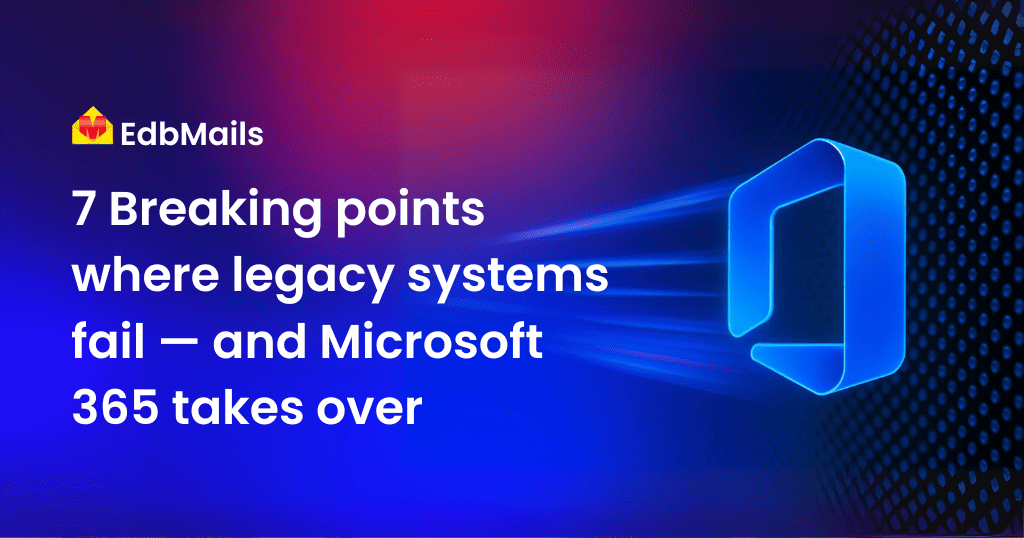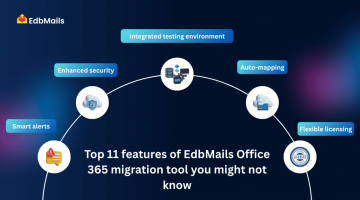The move to Microsoft 365 is no longer a matter of if, but when. As business demands evolve, legacy systems often become a barrier rather than a backbone. Microsoft 365 offers modern tools that integrate communication, collaboration, and cloud productivity into a single, scalable platform. If your organization is facing the following challenges, it’s a clear signal that the time to migrate to Microsoft 365 is now.

1. Your on-premises systems demand constant maintenance
Managing traditional Exchange servers requires continuous attention. Hardware failures, outdated patches, and manual backups consume your IT team’s time. As systems age, downtime becomes more frequent and performance suffers. Microsoft 365 eliminates infrastructure stress by shifting critical workloads to the cloud, backed by Microsoft’s reliability and automated updates.
2. Your workforce needs flexible and secure access
Modern teams are no longer confined to office desks. If your current infrastructure limits secure access to emails, files, and collaboration tools outside the network, it’s slowing your business. Microsoft 365 offers real-time access from any device or location. Built-in tools like Teams and OneDrive support remote work without adding complexity or risk.
3. Security management is becoming overwhelming
When you’re juggling antivirus, firewalls, email filters, and data protection policies manually, the risk of oversight increases. Microsoft 365 delivers enterprise-grade security by default. Features like threat protection, advanced auditing, and encryption are always on. Compliance tools are integrated and constantly updated, reducing manual overhead and keeping your business ahead of regulatory standards.
4. Scaling your business is becoming inefficient
As your team grows, adding new users, hardware, and licenses can quickly turn into an operational burden. Microsoft 365 simplifies this with subscription-based licensing. You can scale up or down based on actual usage, avoiding unnecessary costs. There’s no need for upfront investment in infrastructure or third-party services to onboard new users.
5. Your collaboration tools feel disjointed
If your teams are switching between multiple platforms for chat, email, document sharing, and meetings, productivity takes a hit. Microsoft 365 connects all essential tools in one place. Outlook, SharePoint, Teams, and Office apps are tightly integrated. Employees can communicate, co-author, and access shared content without leaving their workflow.
6. You’re experiencing service interruptions or slowdowns
Frequent outages or delays during peak hours point to capacity limits or outdated infrastructure. These disruptions impact customer experience and internal operations. With Microsoft 365, you gain access to Microsoft’s globally distributed data centers and guaranteed service uptime. Performance and availability are no longer tied to your physical server limitations.
7. Your current software is nearing end-of-life or support
Many businesses continue using older systems simply because they still run. But when support ends, so do security patches, technical help, and upgrade paths. Running on unsupported software exposes your organization to risks and restricts your ability to evolve. Microsoft 365 ensures you’re always on the latest version with new features rolled out regularly.
Final Thoughts
Recognizing these signs early can save your organization time, cost, and complexity. Microsoft 365 isn’t just about cloud storage or hosted email — it’s about giving your team the tools they need to work smarter, faster, and more securely. If you’re planning a move, it’s critical to choose the right migration path.
EdbMails Office Migration Software can help you transition smoothly to Microsoft 365. It supports hybrid, staged, and cutover migrations with zero data loss. With advanced filtering, auto-mapping, and support for large-scale deployments, EdbMails makes the process predictable and efficient.
Migrating at the right time ensures you stay ahead of competition and ready for future demands. Microsoft 365, backed by the right tools and planning, sets that foundation.



